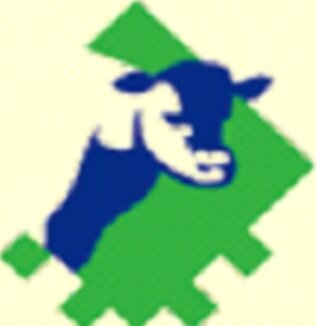Common Mistakes in Calf Rearing
Common Mistakes In Calf Rearing
Here are the most common mistakes in recognizing and treating calf scours.
Mistake 1:
Not Recognizing Sick Calf Behaviour: Noticing abnormal calf behaviour is a red flag that a calf may have scours. Healthy calves are hungry, active, and curious. Calves with scours are likely:
• To be more lethargic and inactive
• To have a loss of appetite
• To be isolated and uncurious about environment and activities
The more exaggerated these behaviours seem, the more ill or dehydrated the calf may be. Once you notice a calf behaving in abnormal ways, then you may want to investigate. Recognizing these warning signs of scours can give you an early alert to potential problems and an opportunity for quick action. Recognizing symptoms beyond diarrhoea is also useful when you notice extremely loose patties in the pen, but are unsure which calf is suffering from scours.
Mistake 2:
Not Using Symptoms to Determine a Calf’s Condition: You may notice odd behaviour first, but gathering additional information about symptoms will indicate how sick the calf is, as well as the likely cause of scours.
Dehydration is a serious consequence of scours, and the most common cause of scours related deaths. There are several signs of dehydration. The tent test checks the skin elasticity since the skin of a dehydrated calf loses elasticity. Pull up a fold of skin on the neck and then quickly release it.
On a well-hydrated calf with normal elasticity the skin will immediately return. If the skin takes a few seconds to return to the original position then the calf is dehydrated. The longer the skin takes to return to the normal position, the more dehydrated the calf. If a calf’s nose and mouth appear dry or the eyes appear sunken, then it may be suffering from serious dehydration and should be treated without delay.
Dehydrated and sick calves will also have abnormal body temperature. Normal temperature for a healthy calf is between 37 and 38 degrees C. A temperature below or above normal is a sign that treatment is required. Accurate temperatures can be taken with a rectal thermometer. A less accurate, quick check can be done by feeling the calf’s ears.
Mistake 3:
Making the Wrong Diagnosis of the Cause of Scours: Calf scours is a symptom that is common to a number of conditions – ranging from nutritional issues to parasites. A proper diagnosis means you are able to create the proper treatment plan. The wrong diagnosis not only means a wasted treatment effort, but meanwhile the calf is no closer to recovery and it may even be harmed by the wrong medication.
It is important to make the proper diagnosis so the correct treatment action is taken.
The manure will provide the best clues as to the cause of the scours. For example, nutritional scours will probably be very liquid and white. Scours associated with Rota virus, a common cause of scours, will be brown and watery. Calf scours caused by parasites are more likely to have blood in the manure. Ask a vet or animal health professional for diagnosis charts and tables that relate manure description to root causes, and seek their help if you are unable to diagnose the root cause of scours.
Mistake 4:
Late or Inadequate Treatment of Scours: The sooner you properly identify the cause of the scours and initiate a treatment program, the more quickly the calf will recover. Any delay in treating a sick calf that requires care could potentially cause problems for the calf’s long term health, and may even put the calf at risk of death.
The sooner re-hydration techniques are used and mediation is given (if needed), the faster the calf will recover and resume normal growth. Plus, the faster the calf recovers the less concern there is about it being infectious to other calves and the herd in general (if it has a contagious cause of scours).
A calf that becomes very ill and almost dies will take significantly longer to fully recover than one treated promptly before becoming critical. A very serious condition can result in arrested growth and development, and they may never regain their normal body weight. Prompt treatment, including re-hydration of a dehydrated calf, provides the best chance of quick recovery and avoiding a critical condition.
Mistake 5:
Not Employing Proper Sanitation Methods: Some causes of scours are contagious. Properly cleaning and sanitizing equipment used for care and feeding can prevent spreading of infectious bacteria, viruses, and parasites to other animals.
Properly sanitize equipment such as:
• Buckets
• Syringes
• Needles
• Feeding Tubes
• Feeders
•Any tools or equipment that comes in contact with a sick calf
Scrubbing with a strong detergent and warm water is sufficient for most cleaning purposes. If you use a chemical disinfectant, however, be sure it states on the label that it is effective for the particular cause of scours you are treating.
Always feed sick calves after feeding healthy ones to avoid spreading any infectious diseases further.
Mistake 6:
Not Separating Sick Calves: If you have determined that a calf with scours is contagious, or if you are unsure of the cause, it is a good idea to separate it from the other animals. This will reduce the chance of contaminating other calves or causing a wide spread outbreak.
Another important reason to separate sick calves is because their immune system is already under stress. Animals in the herd population may be carriers of other diseases that the calf could easily succumb to in a weakened state.
Avoiding these six common mistakes in recognizing and treating scours will help ensure that sick calves recover swiftly and properly. Just because a calf has loose stools, however, doesn’t mean it needs treatment.
A calf that has a loose white stool, but is eating and drinking normally as well as romping around like a normal healthy calf may not need treatment. Conversely, a calf that is dehydrated, lethargic, and not eating should receive a swift diagnosis and treatment plan to set it on the road to recovery.
The most important key to avoiding problems is taking the time to observe each calf’s behaviour at feeding time or more often if possible and to act promptly when symptoms present themselves.
Download the Common Mistakes in Calf Rearing. PDF
BIOCALF Plus Provides energy, nutrients, minerals, probiotics, prebiotic yeast, enzymes and gelling agent Guar gum.
Click here to learn more about Biocalf Plus
BIOCALF Restore. Provides energy, nutrients, and minerals, at a low cost
SITES OF INTEREST
Antahi Innovations Ltd Antahi Innovations Ltd are a company that specialises in innovative calf rearing solutions
Calf Notes Read the latest international research and information on calf rearing?
Calf Sessions A resource for calf health, nutrition, physiology and management
NZAGBIZ From colostrum management to health and biosecurity, experts from AgResearch and Fonterra discuss all things calf rearing.



